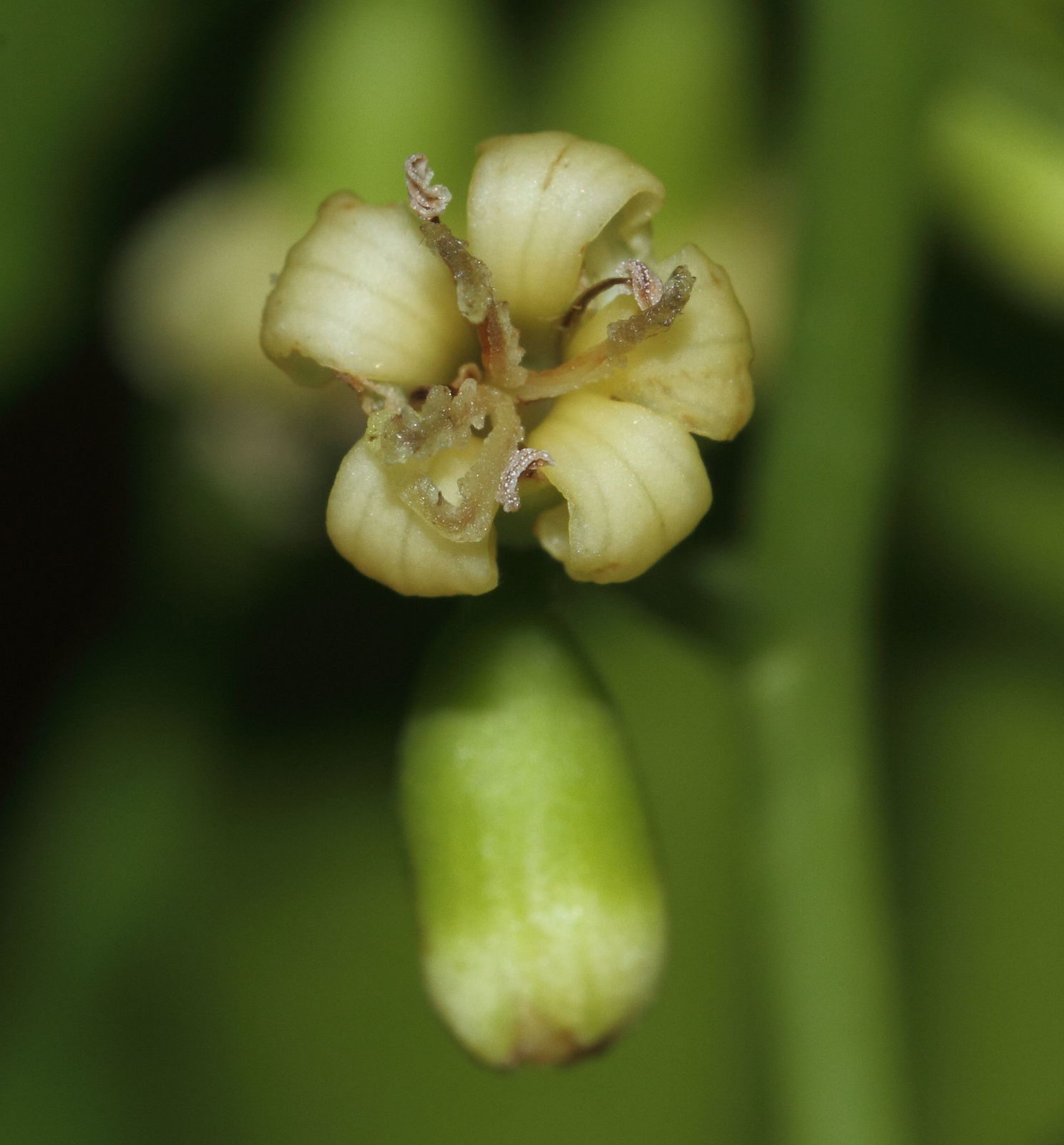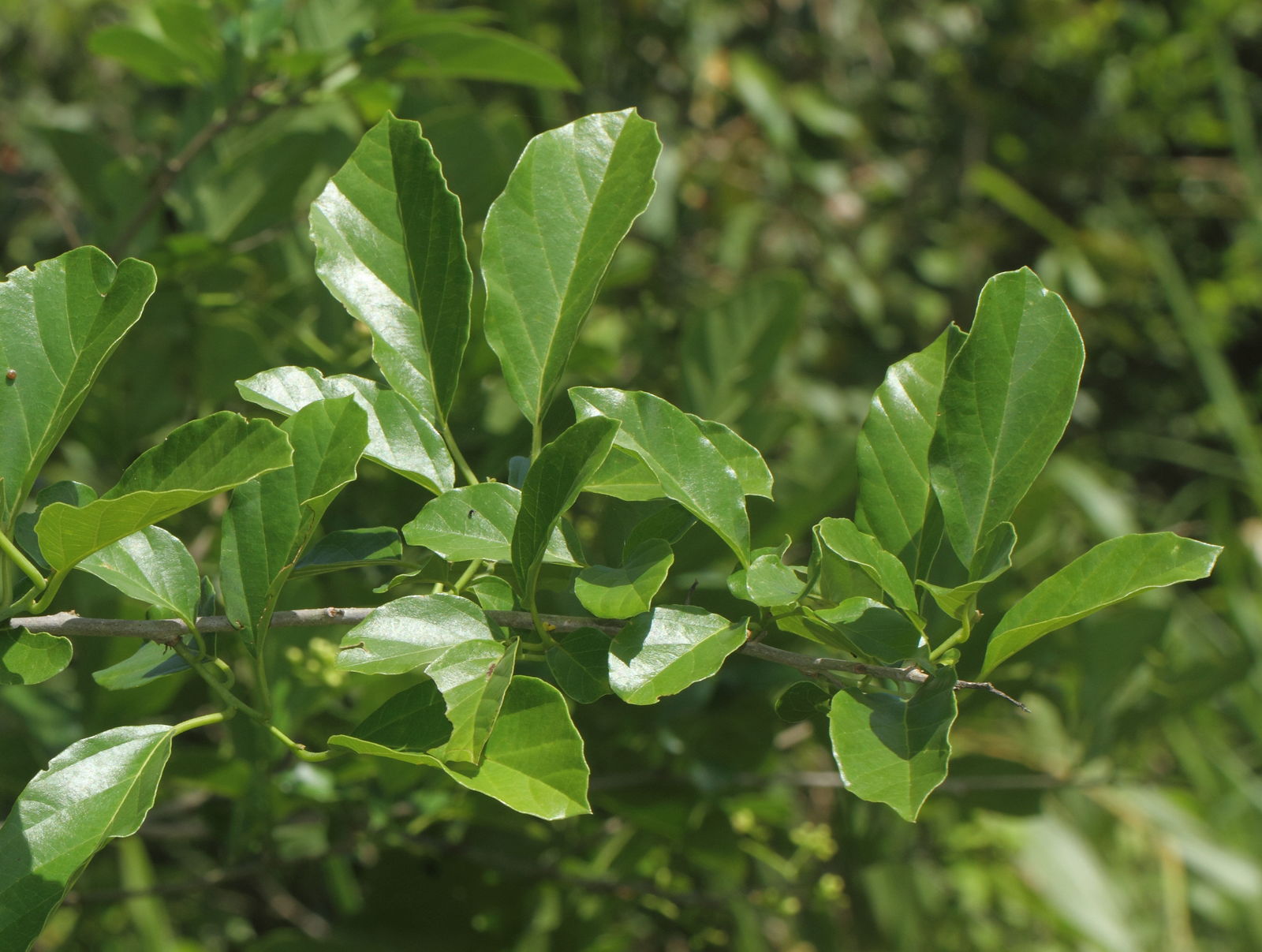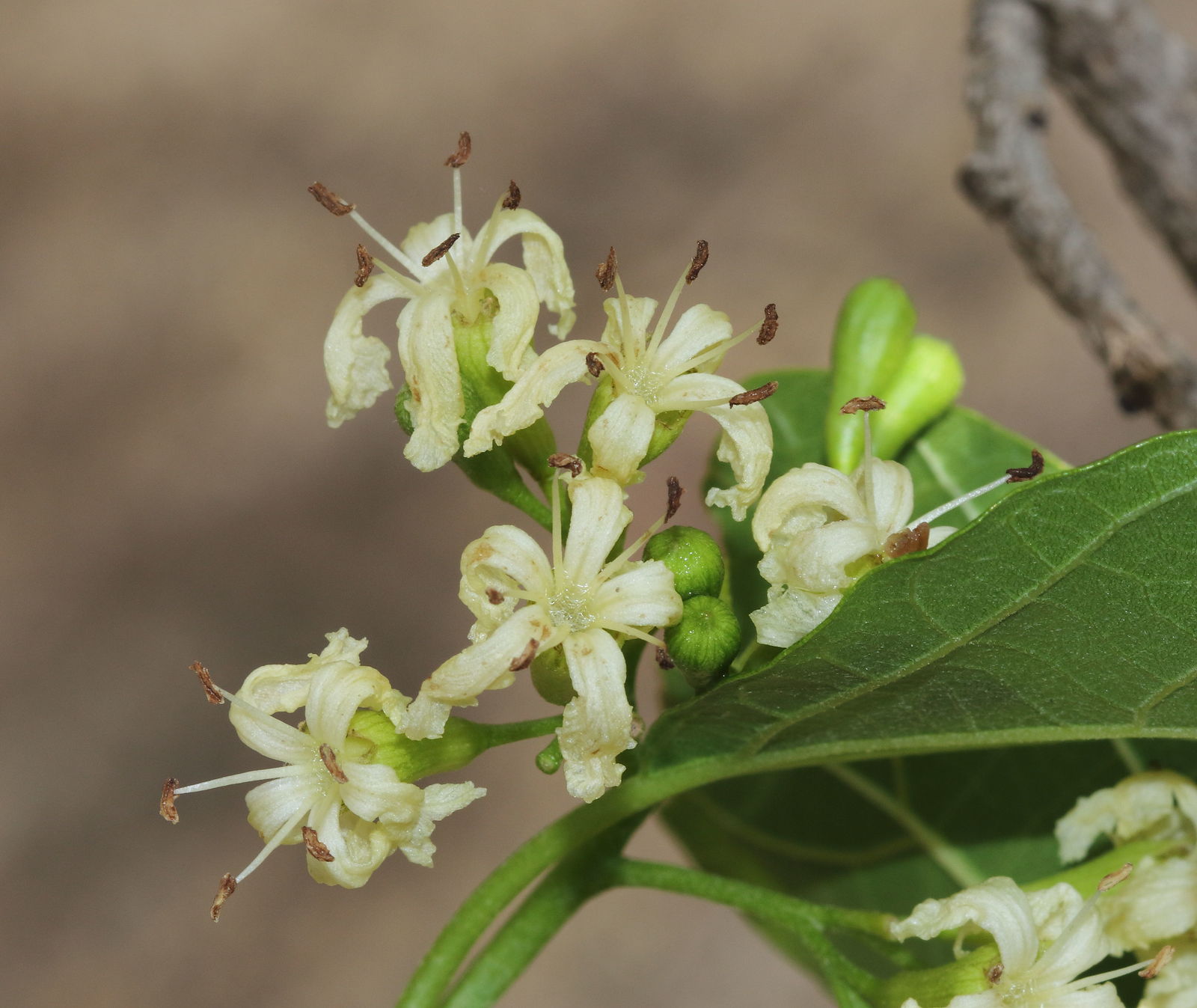Family: Boraginaceae
Author: G.Forst.
Bibliography: Fl. Ins. Austr.: 18 (1786)
Year: 1786
Status: accepted
Rank: species
Genus: Cordia
Vegetable: Unknown
Observations: Indian Subcontinent to Nansei-shoto and SW. Pacific
Description
Fragrant manjack, scientifically known as Cordia dichotoma, is a remarkable plant belonging to the Boraginaceae family. The species was first documented in the 18th century, specifically in the work “Fl. Ins. Austr.: 18 (1786)” by the renowned botanist G. Forst. This plant has garnered attention for its notable presence and distribution, predominantly spanning the Indian Subcontinent to the Nansei-shoto region and extending towards the Southwestern Pacific.
Cordia dichotoma thrives in various climates, displaying a significant degree of adaptability. The common name “Fragrant manjack” derives from the plant’s aromatic qualities, which contribute to its appeal both in natural and cultivated settings. In traditional and modern horticulture, the plant is cherished not only for its fragrance but also for its aesthetic attributes, including its lush foliage and attractive flowers.
Ecologically, Fragrant manjack plays a crucial role in its native regions, supporting local biodiversity. It provides habitat and food for various insects and birds, thereby maintaining ecological balance. Furthermore, this species holds traditional medicinal value in several cultures within its native range, where its different parts are utilized for their purported healing properties.
In addition to its functional uses, Cordia dichotoma is cultivated for ornamental purposes. Its ability to thrive in a range of environmental conditions makes it a versatile choice for gardens and landscapes. The plant’s resilience and minimal maintenance requirements enhance its viability as a sustainable horticultural option.
In summary, Cordia dichotoma, or Fragrant manjack, is a plant of significant ecological, medicinal, and ornamental value. Its widespread presence from the Indian Subcontinent to the Southwestern Pacific underscores its adaptability and importance within these regions. As botanical studies and cultivation of this species continue, its multiple benefits and charming characteristics ensure its continued appreciation and utilization.
Common Names
Eng: fragrant manjack, indian-cherry, clammy-cherry, cordia-tree, glueberry-tree, sebesten, clammy cherry
En: Fragrant manjack, Indian-cherry, Clammy-cherry, Cordia-tree, Glueberry-tree, Sebesten, Clammy Cherry
Synonyms
- Gerascanthus suaveolens ((Blume) Borhidi)
- Cordia brownii (A.DC.)
- Gerascanthus dichotomus ((G.Forst.) Borhidi)
- Cordia premnifolia (Ridl.)
- Cordia subdentata (Miq.)
- Cordia suaveolens (Blume)
- Cordia blancoi var. mollis (Merr.)
- Varronia integerrima (Stokes)
- Cordia tremula (Griseb.)
- Cordia griffithii (C.B.Clarke)
- Cordia wallichii (G.Don)
- Cordia obliqua var. tomentosa (Kazmi)
- Cordia obliqua var. wallichii ((G.Don) C.B.Clarke)
- Lithocardium platyphyllum (Kuntze)
- Cordia dichotoma var. brunnea (Kurz)
- Varronia sinensis (Lour.)
- Sebestena indica ((Lam.) Raf.)
- Lithocardium griffithii ((C.B.Clarke) Kuntze)
- Cordia ixiocarpa (F.Muell.)
- Lithocardium tremulum ((Griseb.) Kuntze)
- Gerascanthus griffithii ((C.B.Clarke) Borhidi)
- Cordia myxa var. ixiocarpa ((F.Muell.) Domin)
- Lithocardium suaveolens ((Blume) Kuntze)
- Cordia indica (Lam.)
- Lithocardium subdentatum (Kuntze)
- Cordia blancoi (S.Vidal)
- Cordia loureiroi (Roem. & Schult.)
- Cordia latifolia (Roxb.)
Distribution
- Andaman Is. (native)
- Assam (native)
- Bangladesh (native)
- Borneo (native)
- Cambodia (native)
- China South-Central (native)
- China Southeast (native)
- East Himalaya (native)
- India (native)
- Jawa (native)
- Laos (native)
- Lesser Sunda Is. (native)
- Malaya (native)
- Maluku (native)
- Myanmar (native)
- Nansei-shoto (native)
- Nepal (native)
- New Caledonia (native)
- New Guinea (native)
- Nicobar Is. (native)
- Northern Territory (native)
- Pakistan (native)
- Philippines (native)
- Queensland (native)
- Sri Lanka (native)
- Sulawesi (native)
- Sumatera (native)
- Taiwan (native)
- Thailand (native)
- Tibet (native)
- Vanuatu (native)
- Vietnam (native)
- West Himalaya (native)
- Western Australia (native)
- Cuba (introduced)
- Florida (introduced)
- Guatemala (introduced)
- Leeward Is. (introduced)
- Marianas (introduced)
- Mexico Southeast (introduced)
- Puerto Rico (introduced)
- Trinidad-Tobago (introduced)
- Windward Is. (introduced)
Additional Images

© copyright of the Board of Trustees of the Royal Botanic Gardens, Kew.

© copyright of the Board of Trustees of the Royal Botanic Gardens, Kew.

© copyright of the Board of Trustees of the Royal Botanic Gardens, Kew.
Fruit
Taken Oct 7, 2019 by Omolla Srikanth (cc-by-sa)
Taken Dec 18, 2020 by Bravo Djanira (cc-by-sa)
Taken Jan 16, 2022 by gomes caio (cc-by-sa)
Taken Dec 7, 2022 by Caldereiro Luzinete (cc-by-sa)
Taken Jul 31, 2021 by Prithvijit (cc-by-sa)
Leaf
Taken Oct 18, 2022 by abhishek samria (cc-by-sa)
Taken Sep 4, 2022 by Anuja Raniwala (cc-by-sa)
Taken Dec 4, 2022 by M. Hedayat (cc-by-sa)
Taken Dec 19, 2021 by Trap Hers (cc-by-sa)
Taken Dec 19, 2021 by Trap Hers (cc-by-sa)
Habit
Taken May 2, 2022 by Fonseca Wendel (cc-by-sa)
Taken Oct 13, 2022 by Fonseca Wendel (cc-by-sa)
Taken Oct 13, 2022 by Fonseca Wendel (cc-by-sa)
Taken Dec 18, 2020 by Bravo Djanira (cc-by-sa)
Taken Dec 19, 2021 by Trap Hers (cc-by-sa)
Other
Taken Aug 12, 1997 by Royal Botanic Garden Edinburgh – Anonymous (cc-by-nc)
Taken Apr 18, 1973 by Royal Botanic Garden Edinburgh – Anonymous (cc-by-nc)
Taken Aug 6, 1983 by Royal Botanic Garden Edinburgh – Anonymous (cc-by-nc)
Taken Oct 30, 1995 by Royal Botanic Garden Edinburgh – Anonymous (cc-by-nc)
Taken Dec 4, 2022 by M. Hedayat (cc-by-sa)
Bark
Taken Aug 18, 2021 by Mirhani Nourddine (cc-by-sa)
Taken Nov 20, 2021 by Panhoci Madalena (cc-by-sa)
Taken Mar 30, 2020 by kartik kartik (cc-by-sa)
Taken Dec 4, 2022 by M. Hedayat (cc-by-sa)
Taken Dec 18, 2020 by Bravo Djanira (cc-by-sa)
Flower
Taken Jul 23, 2022 by M. Hedayat (cc-by-sa)
Taken Dec 4, 2022 by M. Hedayat (cc-by-sa)
Taken Jul 22, 2022 by M. Hedayat (cc-by-sa)
Taken Dec 4, 2022 by M. Hedayat (cc-by-sa)
Sources
- WFO (No URL)
- IPNI (No URL)
- POWO (http://powo.science.kew.org/taxon/urn:lsid:ipni.org:names:114098-1)
- GBIF (https://www.gbif.org/species/5341270)
- PlantNet (https://identify.plantnet.org/species/the-plant-list/Cordia dichotoma G.Forst.)





























